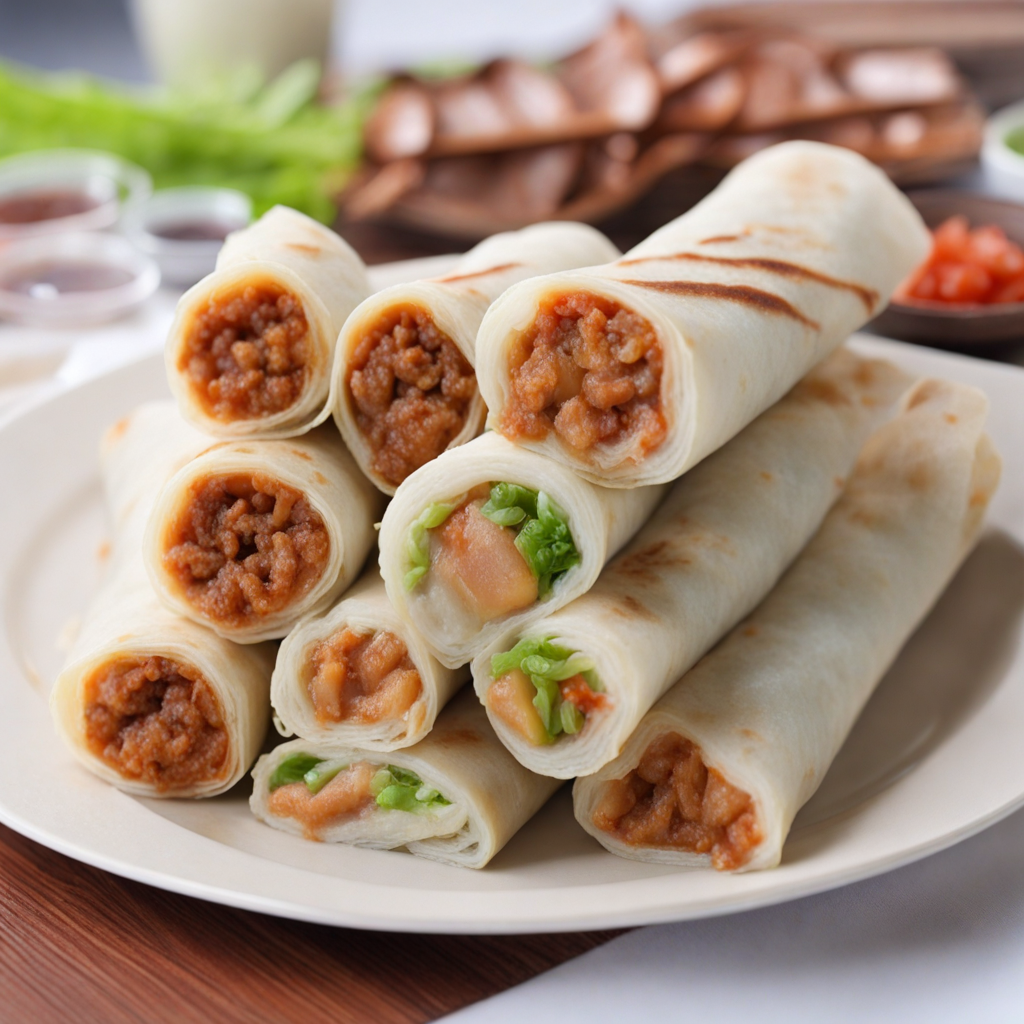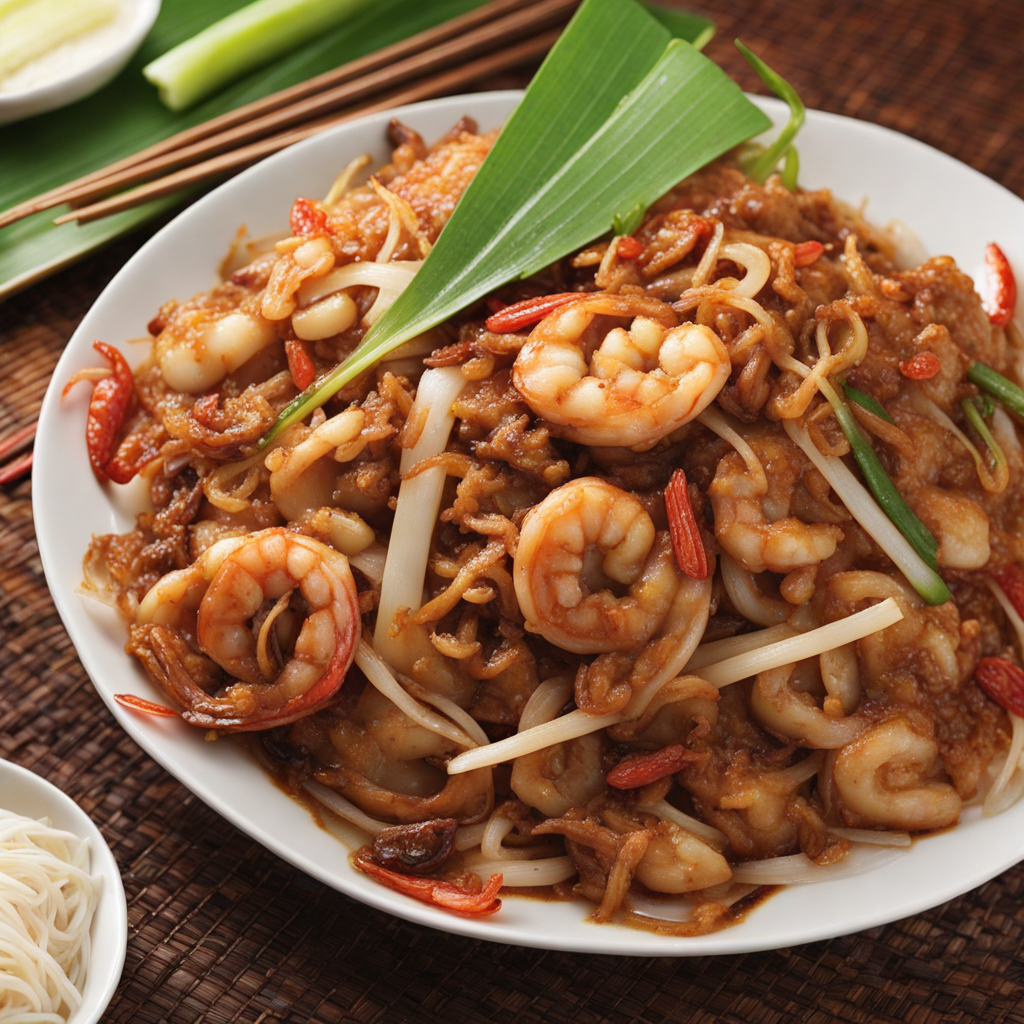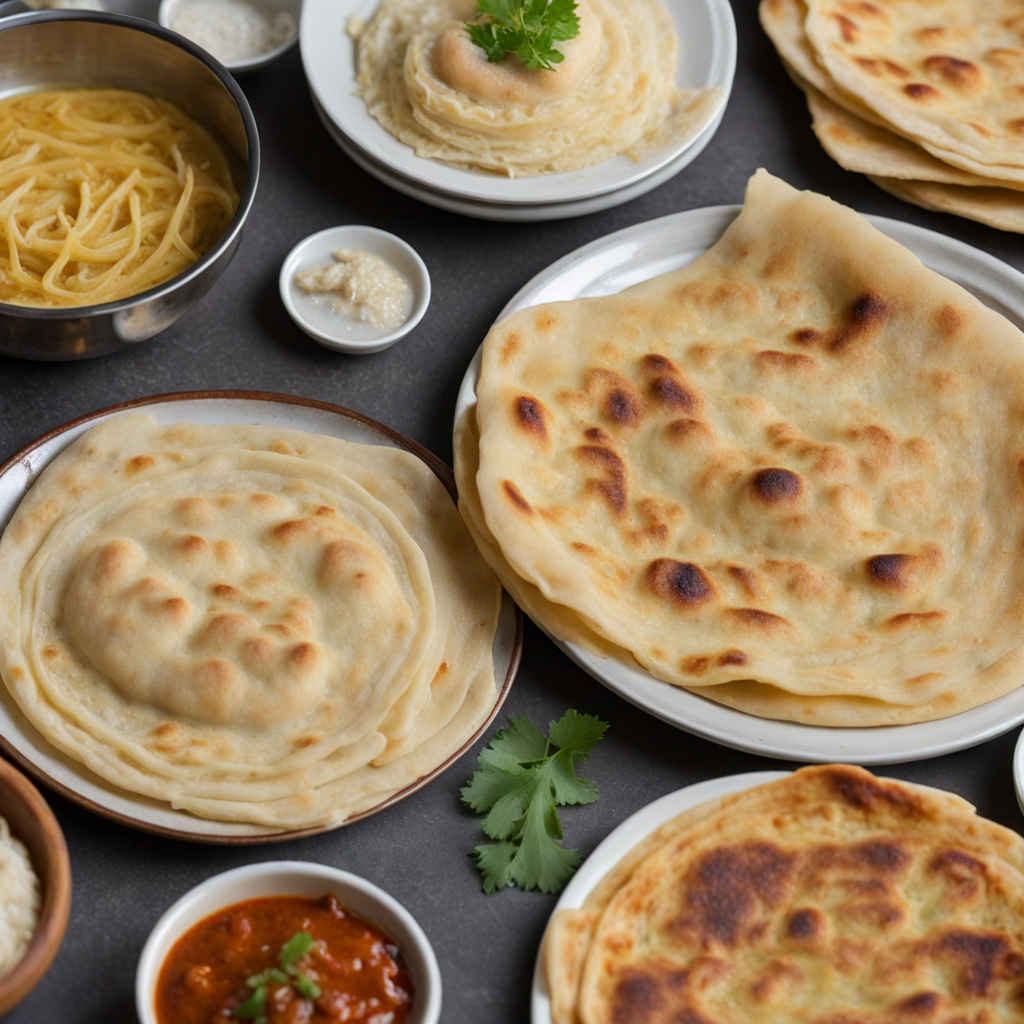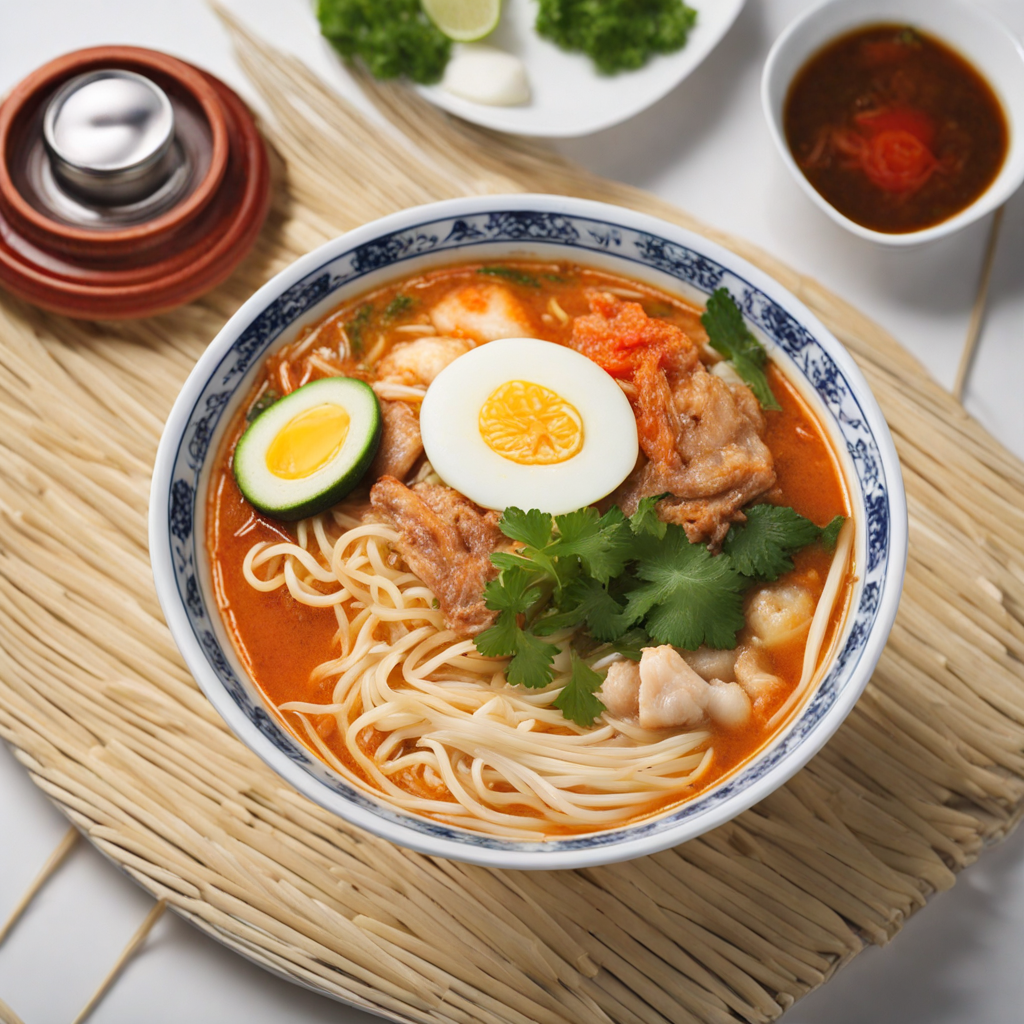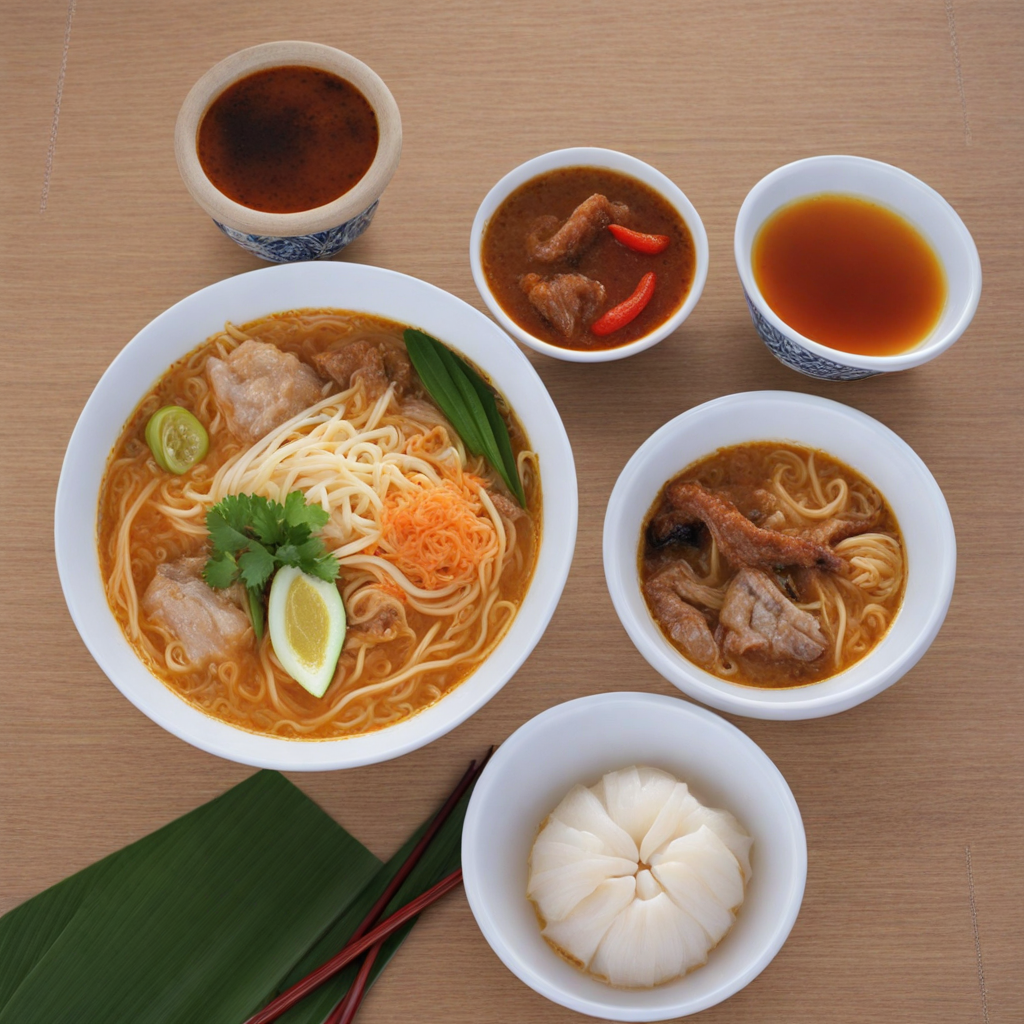Popiah
Popiah is a delightful Malaysian dish that embodies the perfect balance of flavors and textures, making it a must-try for any food enthusiast. This fresh spring roll is typically made with a thin wheat flour crepe that is soft and pliable, allowing it to wrap around a variety of fillings. The basic filling usually consists of finely shredded vegetables, such as jicama, carrots, and bean sprouts, often accompanied by a protein like shrimp or chicken, and sometimes even tofu for a vegetarian option. Each bite reveals a medley of fresh, crunchy vegetables that harmonize beautifully with the savory elements of the dish. What sets Popiah apart is the array of sauces and condiments that accompany it. A sweet and savory hoisin sauce is commonly spread inside the roll, while a dash of chili sauce can be added for those who enjoy a bit of heat. Some variations also include crushed peanuts and fresh herbs, such as cilantro or mint, which enhance the overall flavor profile and add an aromatic touch. The combination of these elements creates a delightful contrast between the fresh, crisp vegetables and the rich, flavorful sauces, making each bite a burst of culinary joy. Popiah is not just a dish; it is an experience that reflects the vibrant culture of Malaysia. Often served as a street food or at festive gatherings, it's a dish that encourages sharing and socializing. The preparation of Popiah can also be a communal affair, with family and friends coming together to assemble their own rolls, allowing for personalization with various fillings and condiments. This interactive aspect, combined with the fresh and vibrant flavors, makes Popiah a captivating dish that invites you to explore the unique tastes of Malaysian cuisine.
How It Became This Dish
The History of 薄餅 (Boh Piah) in Malaysia Introduction 薄餅, pronounced "boh piah" in Mandarin, is a traditional Malaysian snack that has won hearts and stomachs alike with its delightful combination of flavors and textures. Often translated as "spring roll" or "thin pancake," these delicious wraps are not only a staple in Malaysian street food but also carry with them a rich history and cultural significance that reflects the diverse tapestry of Malaysia's culinary heritage. Origins and Historical Context The origins of 薄餅 can be traced back to the broader culinary traditions of Southeast Asia, particularly within the Chinese diaspora. The Chinese community in Malaysia is one of the largest ethnic groups in the country, and their influence on local cuisine is profound. The concept of wrapping fillings in thin dough is not unique to Malaysia; it can be found in various forms across the globe, from the Italian cannoli to the Middle Eastern samosa. However, the Malaysian version has its distinct characteristics shaped by local ingredients and cultural exchanges. Historical records indicate that the Chinese began migrating to Malaysia in significant numbers in the 15th century, primarily for trade and labor. They brought with them their culinary traditions, which over time, blended with the local Malay, Indian, and indigenous cuisines. The adaptability of these communities allowed 薄餅 to evolve, incorporating local spices, vegetables, and meats into its fillings. Cultural Significance In Malaysia, 薄餅 is more than just a snack; it holds a special place in the cultural fabric of the nation. It is often served during festivals, family gatherings, and celebrations, symbolizing unity and shared heritage. The preparation of 薄餅 can be a communal activity, with families coming together to make the dough and fillings, thereby reinforcing bonds and traditions. The dish is also tied to specific cultural celebrations. For instance, during the Chinese New Year, 薄餅 might be prepared as part of the festivities, signifying good fortune and prosperity for the coming year. In addition, its versatility means it can be adapted to suit different occasions, whether as a savory snack during tea time or as a hearty meal. Ingredients and Preparation Traditional 薄餅 consists of a thin, crepe-like wrapper made from flour, water, and salt, which is cooked on a flat surface until it is golden brown. The fillings can vary widely, reflecting the local agricultural bounty and culinary creativity. Common fillings include julienned vegetables such as carrots, jicama, and bean sprouts, often combined with proteins like shrimp, chicken, or tofu. The mixture is typically seasoned with soy sauce, sesame oil, and a hint of sugar, resulting in a harmonious balance of flavors. The preparation of 薄餅 is an art form in itself. The dough must be rolled out to the perfect thinness, requiring skill and patience. Once cooked, the wrappers are filled and rolled tightly, often served with a side of sweet chili sauce or a tangy dipping sauce, enhancing the overall experience. Evolution Over Time As Malaysia has evolved, so has 薄餅. The dish has undergone several transformations, adapting to modern tastes while still retaining its traditional roots. In urban centers, food vendors have begun to experiment with fusion variations, incorporating international flavors and ingredients. For instance, some vendors now offer spicy renditions with local chili paste or even versions filled with Western ingredients like cheese and ham. The rise of food tourism in Malaysia has also played a significant role in the evolution of 薄餅. As international tourists flock to the country, local chefs and street vendors have embraced the opportunity to showcase their culinary heritage. This has led to a renewed interest in traditional dishes, with many restaurants and food stalls emphasizing the authenticity of their offerings. Moreover, the advent of social media has transformed the way food is consumed and perceived. Photogenic presentations of 薄餅 have become a staple on platforms like Instagram, leading to a resurgence in popularity, especially among younger generations. This digital age has propelled 薄餅 from a humble street food to a trendy dish that captures the essence of Malaysian cuisine. Regional Variations While 薄餅 is widely recognized across Malaysia, regional variations abound. In Penang, for example, the local version may feature a spicier filling, often using ingredients like crab meat or local herbs. In contrast, the version found in Kuala Lumpur might showcase a more straightforward, classic filling that emphasizes the freshness of vegetables. The different cultural influences in various states also contribute to the unique adaptations of 薄餅. In areas with significant Indian populations, one might find spicy potato fillings or even a fusion with dosa, the traditional South Indian crepe. Such variations only serve to highlight the dish's versatility and its ability to transcend cultural boundaries. Conclusion The story of 薄餅 in Malaysia is a reflection of the country's rich history and cultural diversity. From its origins among the Chinese immigrants to its current status as a beloved snack enjoyed by Malaysians of all backgrounds, 薄餅 has successfully woven itself into the culinary narrative of the nation. As Malaysia continues to evolve, so too will the interpretations of 薄餅, ensuring that this cherished dish remains a vital part of the country's gastronomic identity. Whether enjoyed at a bustling hawker center or at a family gathering, 薄餅 serves as a delicious reminder of Malaysia’s dynamic food culture—a testament to the power of food in bridging communities and celebrating shared heritage.
You may like
Discover local flavors from Malaysia


